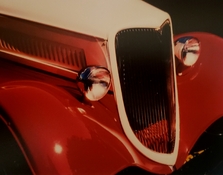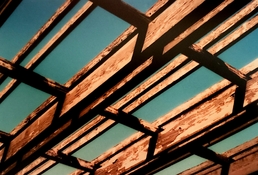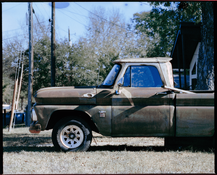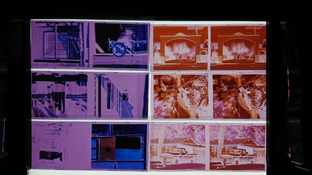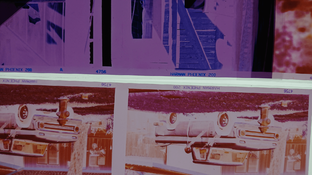- Home
- Forums
- Analog Workflow Forums (100% Analog/Traditional)
- Darkroom
- Color: Film, Paper, and Chemistry
You are using an out of date browser. It may not display this or other websites correctly.
You should upgrade or use an alternative browser.
You should upgrade or use an alternative browser.
First roll of Harman Phoenix photos up!
-
A
- Thread starter Vetus
- Start date
Recent Classifieds
-
For Sale Classic Hasselblad 500 C/M 6x6 all manual Medium Format film camera system
- Started by pdccamerqs
-
For Sale Horseman SW612 w/Rodenstock 45mm f4.5 Apo Grandagon, Ground Glass
- Started by djdister
-
For Sale Canon 28mm f/3.5 LTM plus finder in case
- Started by Steve Goldstein
-
Want to Buy Durst Printo / or any Table Top Processor
- Started by juniejun
-
Want to Buy LF/WTB: Ilex No. 5 Shutter
- Started by Jurgen Estanislao
Forum statistics
I'm glad we agree these traditionally-processed images are charming. Bit too much charm for my taste though.I was really liking your sample images (the white chair by the porch is quite cute), until I realised that those I was looking at were your samples of 'bad bad bad' traditionally exposed and developed Phoenix.
These 3 scenes were intentionally challenging lighting situations to push the film to its limits.Imagine my surprise, then, when I found that those you obtained via your method are much worse. Pure {msinano}, IMHO.
Yes, those are lovely, as are the person's a few pages earlier. Good results are possible.No it's not. Many people find it great. Just a few pages above I posted some results by a guy who is doing pretty great stuff with it.
I tried some out so that I can make an informed decision about whether it meets my needs and have a leg to stand on when I criticize a product.Features, not bugs. Don't like its features? Why not choose to shoot a roll of Portra and call it a day.
The reason I chose such a harsh tone for this article is because, after careful consideration, I realized that if Harman wanted to learn and iterate on a prototype color film, they could get all the feedback and data they need from just a few hundred photographers and releasing small batches for testing.
There was no need to scale up production with an unfinished product this early. If we put aside any backstory about heroic journeys or designing this emulsion in a year, or other romantic narratives, it still does not make business sense to gamble on generating profits from an experimental film (that could flop) as a means to fund further research and development efforts.
Excellent. Is this Phoenix? To me this conjures memories of a certain age of movies popular when I was a child. Think 'Stephen King's IT (1990 ABC miniseries). Or 'Goonies'. 'Twin Peaks', even.
This mood, that your image so nicely conveys, had been captured and remarketed again a few years ago by Netflix with their 'Stranger Things' series, which I'm sure you'll know.
Last edited:
AnselMortensen
Subscriber
Beautiful, @koraks ...
As I've stated earlier, Phoenix works great when using its characteristics to your advantage.
Another tool in the toolbox.
AnselMortensen
Subscriber
AnselMortensen
Subscriber
mshchem
Subscriber
Another one, same roll...
Phoenix has it's own look. No mistaking these prints to ones made from Portra. It's a distinctive look, doesn't look like normal digital images either, unless there's a " Phoenix filter" in iPhones these days.
Thanks for sharing these images!
The reason I chose such a harsh tone for this article is because, after careful consideration, I realized that if Harman wanted to learn and iterate on a prototype color film, they could get all the feedback and data they need from just a few hundred photographers and releasing small batches for testing.
Maybe they could. Maybe they could just toss the rest of the film that those test photographers would not use. But would that be cheaper for Harman? Would that make the final film cheaper for us? Plus, some people seem to enjoy these experimental batches.
Is this Phoenix?
Yes, it is - and thanks. I though this particular frame was appropriate. It's a scan of the negative from a roll of film I hope to print some frames from later as well. Currently waiting for a new batch of paper to arrive...
Beautiful, @koraks ...
As I've stated earlier, Phoenix works great when using its characteristics to your advantage.
Thanks; yes, indeed. It's a very particular animal. I've come to realize that this makes it a unique tool. I hope that as Harman progresses towards more 'sane' color negative film, they'll continue to make batches of the original Phoenix once in a while. There's nothing else on the market that gives this massive amount of punch.
There was no need to scale up production with an unfinished product this early.
Yes, there was. It generated revenues that they could use for further development. It was a smart move. I understand the reasons why you don't like how they handled it, personally. Sometimes there are several ways of approaching something and we all have our preferences. I think it's interesting and in many ways exciting that Harman chose to do it this way - interesting to a large extent because it has appeared to work surprisingly well, indeed. In a way, they've broken with a number of conventions in a constructive way.
I expect that it really helped Harman that the film came from a well respected leader in black and white film.
If Ferrania had done this, people would exclaim "its terrible - they used to be good, and now they are lousy".
When Harman/Ilford does it, people exclaim "Look how much they have accomplished! I can't wait to see what is next!".
And they have been totally forthcoming about their intentions.
If Ferrania had done this, people would exclaim "its terrible - they used to be good, and now they are lousy".
When Harman/Ilford does it, people exclaim "Look how much they have accomplished! I can't wait to see what is next!".
And they have been totally forthcoming about their intentions.
Some additional photos at ISO 50 and 25, respectively, developed using the aforementioned process.
Chrome, overexposed at high noon, does still exhibit some halation.
Chrome, overexposed at high noon, does still exhibit some halation.
Attachments
I'm really liking the EI 25 shots.
Sanug
Subscriber
No, I think the lab was Orwo. Rossman drug store usually send to Orwo, not Cewe. Or Allcop. Dependent on the shop's location where they send it.The lab is virtually certain to be CeWe. The prints are digitally exposed RA4 prints that are made automatically from scans of the film. I think yours came out pretty well considering how extreme Phoenix negatives are in comparison with regular C41 film.
pentaxuser
Member
No, I think the lab was Orwo. Rossman drug store usually send to Orwo, not Cewe. Or Allcop. Dependent on the shop's location where they send it.
Your lab's colours remind me of the sort of colours used in a film called "Dick Tracy" i.e. a kind of set of garish primary colours reminiscent of 1950s colours in comics from the U.S. where nearly everything was like the kind of colours that kids like when starting colour painting
I believe that the makers of the film had deliberately attempted to reproduce the kind of colours found ín those comics that had Dick Tracy stories in them
It's a look that has impact but it's one that loses its appeal very quickly for me
pentaxuser
Some additional photos at ISO 50 and 25, respectively, developed using the aforementioned process.
Comparison of standard C-41 at 125 (left) to my method at 25-50 (right):
Attachments
Your lab's colours remind me of the sort of colours used in a film called "Dick Tracy" i.e. a kind of set of garish primary colours reminiscent of 1950s colours in comics from the U.S. where nearly everything was like the kind of colours that kids like when starting colour painting
Time for a replacement monitor, methinks!
Last edited:
Time for a replacement monitor, methinks!
Nah, the colors on @Sanug's prints do look quite harsh/garish to me, too - but that's what Phoenix does. It takes special care to tune it down to more subtle levels.
Thanks; I can see how gamma is still high, but it seems significantly more muted than on the C41 processed film. I also see that in your process the base color is far less dense (btw, your C41-processed Phoenix base looks remarkably dense, but that's probably just due to the digital capture; the hue seems close or idential to what I get.)Comparison of standard C-41 at 125 (left) to my method at 25-50 (right):
Nah, the colors on @Sanug's prints do look quite harsh/garish to me, too - but that's what Phoenix does. It takes special care to tune it down to more subtle levels.
My point was that those colours have nothing whatsoever to do with comic books colours or primary colours children use when learning etc etc.
I actually quite like the effect, @Sanug.
...
Thanks; I can see how gamma is still high, but it seems significantly more muted than on the C41 processed film. I also see that in your process the base color is far less dense (btw, your C41-processed Phoenix base looks remarkably dense, but that's probably just due to the digital capture; the hue seems close or idential to what I get.)
I took some quick readings with a TR-927 densitometer (so these are just qualitative).
Standard C-41:
- base density: 0.67
- maximum sample density: 2.26 (probably much lower than reality?)
- base density: 0.34
- maximum sample density: 1.79
These rolls are from the same batch. I hadn't planned to do more rigorous analysis because I didn't expect this method to work well enough to share.
Last edited:
pentaxuser
Member
Nah, the colors on @Sanug's prints do look quite harsh/garish to me, too - but that's what Phoenix does. It takes special care to tune it down to more subtle levels.
Whew, thanks. I was about to put an axe through my VDU when I saw albireo's comment
 OK we all have different standards about what constitutes "garish" but surely these colours from those scans are at least by any definition a little beyond normal colours
OK we all have different standards about what constitutes "garish" but surely these colours from those scans are at least by any definition a little beyond normal colourspentaxuser
Whew, thanks. I was about to put an axe through my VDU when I saw albireo's commentOK we all have different standards about what constitutes "garish" but surely these colours from those scans are at least by any definition a little beyond normal colours
What's 'normal' though? Can you provide an example of your work? A film scan will do for me. What do you routinely shoot with? I really like Ektar in 120, and Gold 200 for my daily routine work, and I have very exact standards for what is 'garish' and what is not. And those Phoenix shots are not 'garish' for my taste. They're certainly 'impressionistic', but pleasantly so.
But back to you - I've repeatedly posted examples of my work on this forum so there's a baseline, but I haven't been lucky enough to see anything you've done, so I'm not sure what your 'not garish' baseline is.
Any samples? This is an Phoenix image thread, after all.
I have a feeling that pentaxuser is one of a fair number of people who don't do much digitization of their photography, so find it difficult to share their results on Photrio.
I could be wrong, but ....
I could be wrong, but ....
blee1996
Subscriber
Both 120 and 135 version of Harman Phoenix is on sale everywhere (at least here in the US), thanks to Thanksgiving and Black Friday. If you like the film, it is time to restock. If you have not tried it yet due to its cost, now it is the time. 

| Photrio.com contains affiliate links to products. We may receive a commission for purchases made through these links. To read our full affiliate disclosure statement please click Here. |
PHOTRIO PARTNERS EQUALLY FUNDING OUR COMMUNITY:  |








